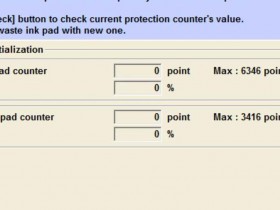- A+
Many large companies and organizations rely on network printers to facilitate their day-to-day operations. In most cases, the default settings of a network printer allow any user to print to it without any restrictions. This lack of restrictions can lead to many problems, such as unapproved usage, overuse of resources, and waste of paper and toner. To help address these issues, it is possible to restrict printing through the implementation of printer sharing group policies.
Printer sharing group policies provide an effective way to control access to network printers and help ensure that only authorized users are able to print from them. With this solution, an administrator can create a separate policy for each printer on the network, and assign it to groups or individual users. These policies can specify which users are allowed to print, the type of documents they can print, and the number of pages they can print. Additionally, they can also be configured to limit the total number of prints a user can make per day or week, as well as the maximum number of copies each user can make of a single page.
Unfortunately, printer sharing group policies are not available for all printers. Some printers may not have the necessary hardware or software to support the implementation of these policies. Additionally, if the printer has limited memory or is a very old model, the printer sharing group policy may not be able to be applied.
Luckily, there are still a few options available to organizations who wish to restrict access to their network printers. For example, they can set up separate user accounts for each printer, and assign individual user names and passwords to each account. This will ensure that only users with the correct credentials are able to access the printer.
Organizations can also purchase a dedicated print server, which will enable them to control access to the printers and configure printer sharing group policies. A print server is a dedicated computer that is connected to the network and is used to manage the network printers. It is capable of implementing the necessary restrictions, such as operating system and application level access control, limiting the number of prints per user, and setting up print queues to ensure that documents are printed in the correct order.
Finally, organizations can also purchase an authentication device, such as a card readers, which can be used to verify each user’s identity before allowing them to print. This will ensure that only authorized users can access the printer and make sure that each user is only allowed the resources they are authorized for.
In conclusion, printer sharing group policies can be an effective way to control access to network printers, but not all printers are able to support the implementation of these policies. Organizations who wish to restrict access to their network printers have a few other options available, such as setting up separate user accounts, purchasing a dedicated print server, or using authentication devices.
许多大公司和组织都依靠网络打印机来实现其日常运作。在大多数情况下,网络打印机的默认设置允许任何用户在没有任何限制的情况下打印。这种缺乏限制可能会导致许多问题,例如未经批准的使用,资源的过度使用,以及纸张和墨盒的浪费。为了帮助解决这些问题,可以通过实施打印机共享组策略来限制打印。
打印机共享组策略提供了一种有效的方法来控制对网络打印机的访问,并帮助确保只有授权的用户才能从它们打印。使用此解决方案,管理员可以为网络上的每台打印机创建一个单独的策略,并将其分配给组或个人用户。这些策略可以指定哪些用户允许打印,他们可以打印的文档类型以及可以打印的页面数量。此外,它们还可以被配置为限制每个用户每天或每周可以打印的总数量,以及每个用户可以打印一页的最大数量。
不幸的是,不是所有打印机都可以使用打印机共享组策略。某些打印机可能缺少实施这些策略所必需的硬件或软件。此外,如果打印
- 微信在线客服
- 这是我的微信扫一扫
-

- 我的微信公众号
- 扫一扫码上服务
-







